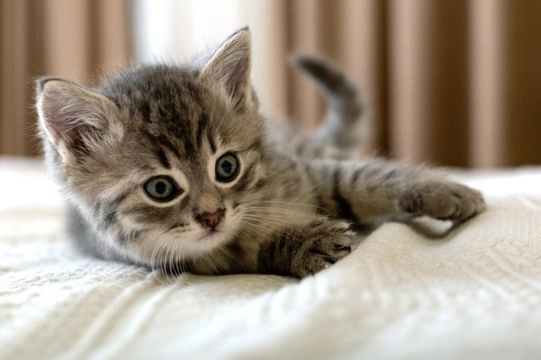
The five common household substances most likely to poison your cat
Cats are a lot more independent and self-sufficient than dogs, and whilst this can cause the odd hair-raising moment for cat owners as they witness or hear of their cats using up one of their supposed nine lives, they’re also a lot more savvy about keeping themselves safe in general too.
Cats are reasonably good at avoiding danger and knowing when to keep out of the way, and they’re also a lot more speculative about what they eat too, being far less likely than the average dog to eat something delicious but poisonous.
However, there are still of course a range of things that are poisonous and toxic to cats and that can be found easily in the average home or garden, and that cats don’t need to eat in order to be placed in danger.
Some of these are more common and acutely dangerous to cats than others, and so with this in mind, this article will tell you the most common substances you might have around the home that can potentially poison your cat, and how. Read on to learn more.
Antifreeze
Antifreeze is something most of us have on hand for winter, and this is acutely poisonous to cats and a particular problem because unlike many poisons (which have a bitter smell and taste to cats and so, result in them giving it a wide berth) is somewhat sweet and palatable.
Antifreeze that is spilled or left open might tempt your cat to drink it, but a greater threat is spills that your cat walks through or gets on their fur, and then ingests by licking their fur to groom it off.
Lilies
Lilies may be beautiful but they’re also deadly to cats, and all parts of the plant, be it a potted lily or cut flowers, are acutely toxic and a tiny amount is often fatal to cats if ingested.
Cats aren’t likely to eat lilies (although some cats like to bite at the leaves of plants) but lily pollen is heavy and prolific, and drops all around lily plants and particularly, cut lilies. This makes the chances of your cat brushing past the plant and getting pollen on their fur that they then lick off very high.
There is no safe way to bring lilies into a house where cats live, so please make it a rule to pick other plants and flowers.
Flea/tick products for dogs, or less commonly, cheap high street versions for cats
Flea and tick products for cats can seem expensive, and many cat owners try to shortcut and save a little money by buying over the counter products or otherwise looking for cheaper alternatives to those offered by the vet.
However, products that your vet doesn’t recommend aren’t always effective; and flea products designed for dogs might seem cost-effective as you get more for your money, but they contain different ingredients and require a different dosage; and so using a dog flea product on your cat can actually result in poisoning them.
Very very cheap flea products for cats that cost just a pound or two for a pipette or flea collar and that can be bought in supermarkets and even pound shops also contain a pesticide that is not effective against fleas anymore. It can also cause an adverse reaction in a small number of cats that can make them acutely ill, so avoid these as they are potentially dangerous, and a false economy.
Tar-based liquids like creosote
Creosote for painting fences and other tar-based products such as you might use for disinfecting things, treating wood, and various other purposes are highly toxic to cats. Whilst creosote itself has a different formulation today than it used to as a result of new laws on safety and environmental pollution, any tar-based product is dangerous to cats, and lots of people still have old-style creosote at home.
If your cat gets something like this on their fur and licks it off, it can make them very ill and even potentially prove fatal.
Rodenticides and slug pellets
Rodenticides are products designed to kill rodents like rats and mice, and slug pellets are of course to kill slugs. All of these things are obviously toxic, and your cat might come into contact with them or ingest them in a number of different ways.
When it comes to rodenticides or rodent poisons, the most common way your cat will come into contact with them is by hunting and eating rodents that have themselves eaten the poison.
Rodents that have been poisoned will be ill and so, slower and easier to catch by cats, increasing the risk.
Slug pellets are used to treat gardens, sprinkled into the earth. These mix with the soil and break down in rain and moisture, and if your cat then walks there or does their business and buries it, they’ll come into contact with the toxin and potentially, ingest it when they lick their paws.



